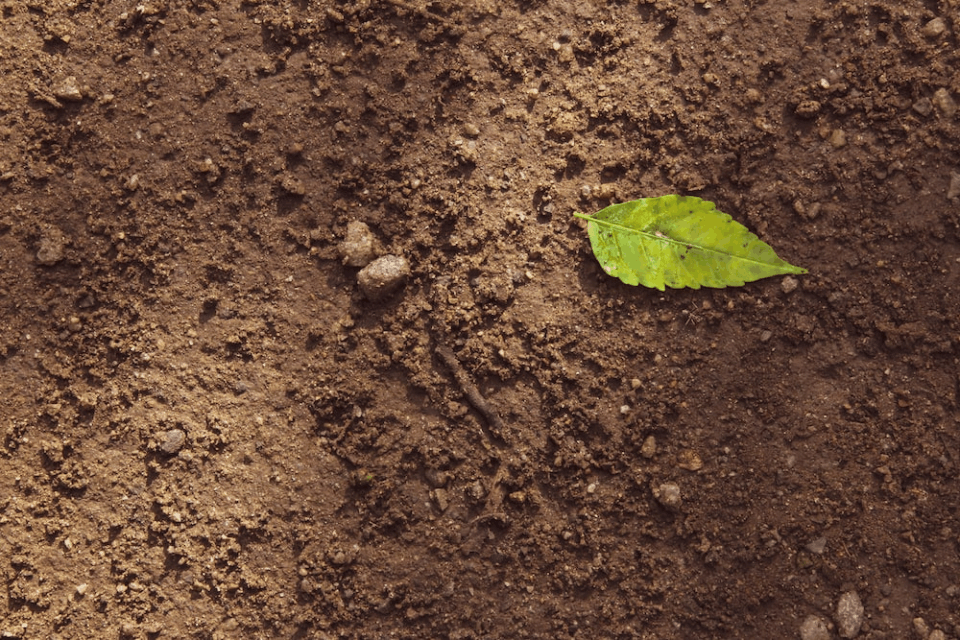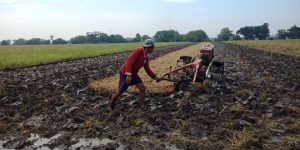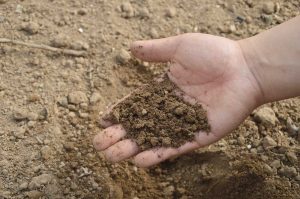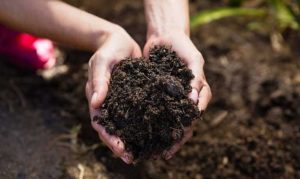Loose soil structure is a key factor in plant growth because it provides sufficient space for roots to breathe, absorb water, and access nutrients more effectively.
Compacted and hardened soil can hinder root development and reduce water infiltration, which may lead to waterlogging during rainy seasons or drought during dry periods.
Good soil physical conditions also play a crucial role in maintaining the balance of microorganisms living within, as they require adequate soil pores to reproduce and assist in the decomposition of organic matter.
The sustained fertility of loose soil offers long-term benefits by preserving land productivity, reducing erosion risks, and supporting sustainable agricultural practices.
With this understanding, several simple steps can be applied to improve soil structure, enhancing plant growth quality while creating a healthier planting environment.
Read Also : 10 Tips for Utilizing Organic Fertilizer to Improve Soil Quality
How to Improve Soil Structure for Better Looseness
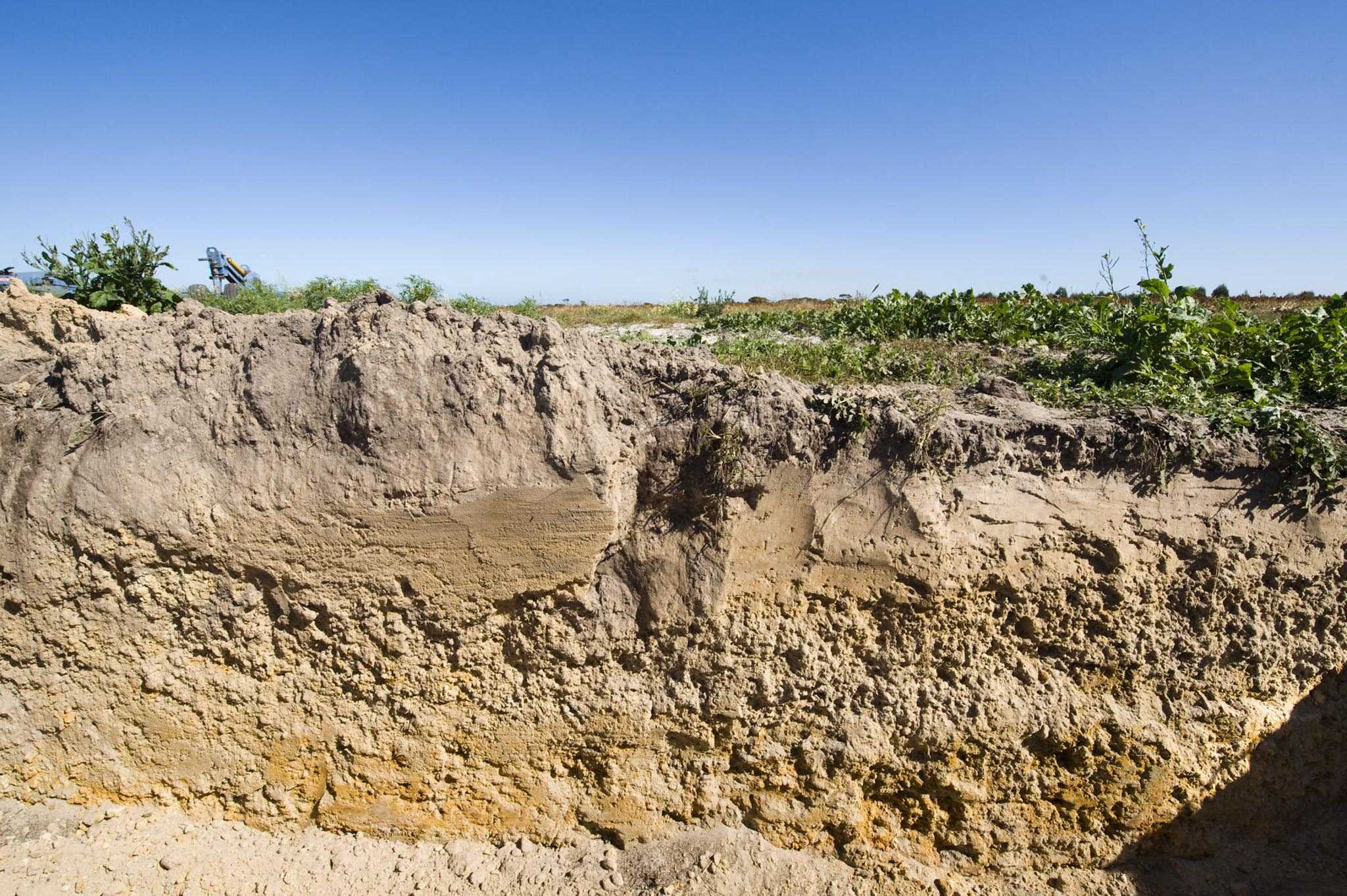
Here are some simple steps to improve soil structure so that it becomes looser and can optimally support plant growth:
1. Adding Natural Organic Matter
Natural organic matter such as crop residues, dry leaves, straw, and decomposed kitchen waste plays an important role in improving soil structure. The fiber content and nutrients contained in it increase soil porosity, making the soil looser and easier to cultivate.
With more pores, water can infiltrate better, air circulates more freely, and plant roots can grow without obstruction. The decomposition process of organic matter also produces humus, which is highly beneficial for improving soil texture and enhancing water retention capacity.
In addition, organic matter serves as a food source for soil microorganisms that are essential in maintaining a balanced soil ecosystem.
These microorganisms accelerate the breakdown of organic matter into simpler nutrients that plants can easily absorb.
By regularly adding natural organic matter to the land, the soil structure becomes looser, more fertile, and better able to support sustainable plant growth. Using organic matter also reduces reliance on chemical fertilizers, which in the long run can damage soil balance.
2. Using Well-Matured Manure
Well-matured manure provides significant benefits for improving soil fertility and looseness. Proper fermentation makes manure rich in essential nutrients such as nitrogen, phosphorus, and potassium, which are crucial for plant growth.
Its fibrous texture also helps enhance soil’s physical condition by adding organic content that can retain water and create more room for roots. Immature manure often retains heat and can damage plants, making the use of properly matured manure essential.
Another advantage of well-matured manure is its ability to enrich the soil with beneficial microorganisms. These microorganisms break down organic content into simpler forms that plants can absorb more easily.
Soil that was once compact and hard gradually becomes looser because manure contributes to humus formation. With regular application, farmland becomes not only looser but also more fertile, thereby supporting maximum plant growth and yield.
3. Applying High-Quality Compost
High-quality compost is one of the most effective ways to improve compacted soil conditions. Properly produced compost results in organic material that is fully decomposed and safe for plant use.
The humus content in compost binds soil particles together, creating a crumbly and loose structure. Compost also enhances the soil’s ability to retain water, ensuring that plants have a steady supply throughout the seasons.
Beyond structural improvement, quality compost also increases the availability of essential nutrients that plants can quickly absorb.
Soil microorganisms benefit from the new energy source provided by compost, which boosts biological activity in the soil. This creates a healthier and more fertile soil environment over the long term.
With regular application, soil is protected from excessive compaction and remains in optimal condition for supporting a wide range of crops.
4. Applying Mulching Systems
The application of mulch on soil surfaces helps maintain moisture and protects the soil from extreme weather effects. Mulch, whether organic such as straw and dry leaves or inorganic such as silver-black plastic, reduces excessive water evaporation from the soil surface.
With well-maintained moisture, soil does not harden easily and remains in a looser state. Mulch also shields soil from direct raindrop impact, which can cause compaction or erosion.
Another benefit of mulching is its role in protecting soil organisms that are essential for soil structure formation. The protective layer creates a stable environment that allows microorganisms to work more effectively in decomposing organic matter.
Gradually, the soil becomes richer in humus and its structure more friable. Consistent use of mulch not only maintains soil looseness but also supports healthier and more productive plant growth.
5. Conducting Regular Soil Loosening
Soil loosening is a simple yet crucial step to maintain air circulation within the soil. Regular tilling helps break up hardened layers that may form due to heavy rainfall or trampling by humans and animals.
With loosened soil, rainwater can infiltrate properly into deeper layers instead of pooling on the surface. Plant roots also gain more space to expand and absorb nutrients efficiently.
In addition to improving water circulation, loosening also enhances oxygen supply, which is vital for both roots and soil microorganisms. Soil that remains compacted tends to lack oxygen, leading to stunted plant growth.
Regular loosening keeps soil’s physical condition stable while preventing the formation of hard surface crusts. Through this simple practice, farmland stays loose and always ready for replanting.
6. Practicing Regular Crop Rotation
Crop rotation has a positive impact on maintaining soil nutrient balance. Planting different types of crops alternately in the same land prevents the depletion of a single nutrient.
For example, legumes can enrich soil nitrogen through symbiosis with nitrogen-fixing bacteria. With crop rotation, soil conditions remain more balanced and less prone to exhaustion.
Apart from balancing nutrients, crop rotation also helps reduce pest and disease risks, which usually accumulate in monoculture fields.
Soil that was once compact can regain looseness due to the varied root systems of different plants. Diverse root structures naturally loosen the soil through growth and decay processes. With consistent crop rotation, farmland remains productive and soil structure is maintained in the long term.
7. Avoiding Excessive Chemical Use
Excessive use of chemicals over time can damage soil structure. Continuous application of synthetic fertilizers and pesticides often depletes the soil’s organic matter.
When organic content diminishes, soil becomes hard, difficult to manage, and poor in microbial life. Such conditions are highly detrimental because healthy soil requires balance in its chemical, physical, and biological components.
Additionally, accumulated chemical residues may harm beneficial soil organisms responsible for maintaining looseness. Microorganisms that decompose organic matter decrease in number, slowing down humus formation.
As a result, soil becomes more prone to compaction due to the loss of biological activity that keeps pores open. By limiting chemical use and prioritizing organic fertilizers, soil structure can be restored to a looser and healthier state.
8. Planting Cover Crops
Cover crops play a major role in protecting the soil surface from erosion while maintaining soil moisture. Their root systems strengthen soil structure, preventing it from being easily eroded by rain.
Cover crops also produce biomass that decomposes into new organic matter, further improving soil fertility. This additional organic input makes soil looser and more productive.
Another benefit of cover crops is their ability to enhance soil conditions in the long term. Their dense growth suppresses weeds that often disrupt field balance.
Fallen leaves and stems from cover crops enrich humus content, making the soil more crumbly. By planting cover crops, farmland remains productive, well-protected, and equipped with a looser soil structure.
Loose soil allows plant roots to grow more easily and absorb nutrients effectively. A healthy soil structure also helps maintain a more balanced water supply throughout the seasons. Continuous care will provide long-term benefits for land fertility and crop yields.
Read Also : Guide to Maintaining Agricultural Soil to Prevent Damage

